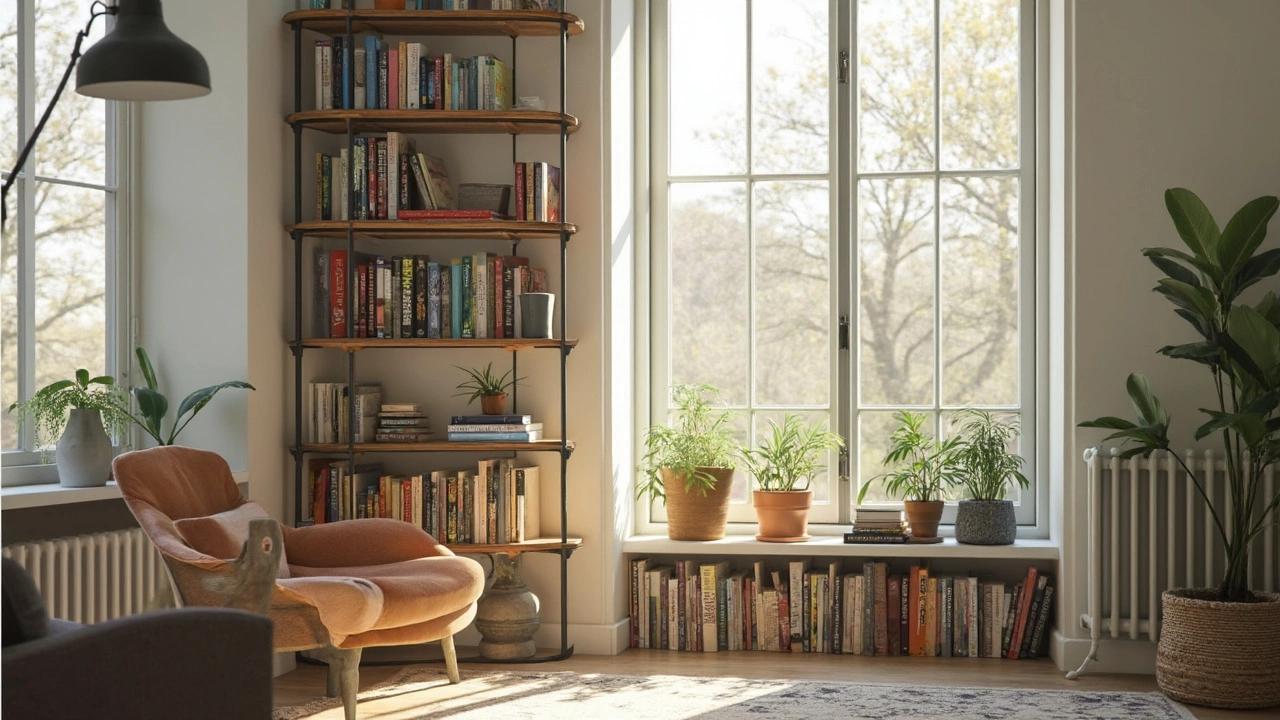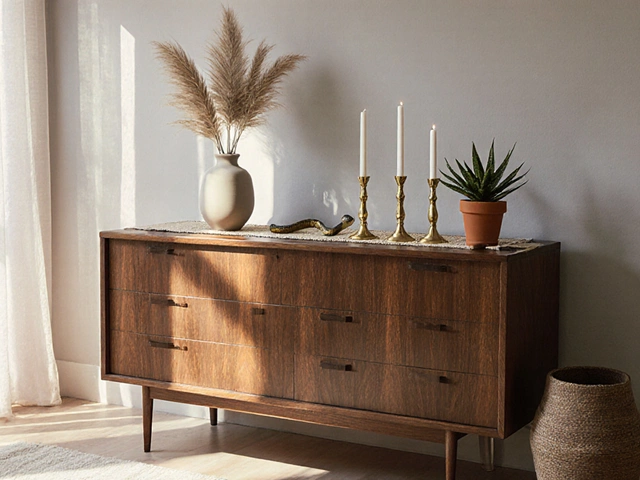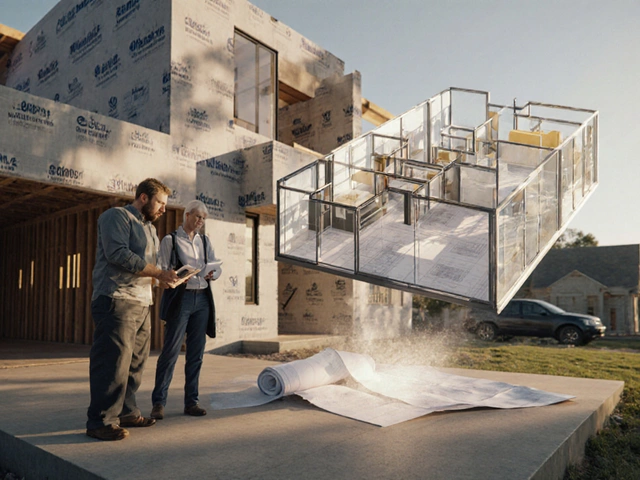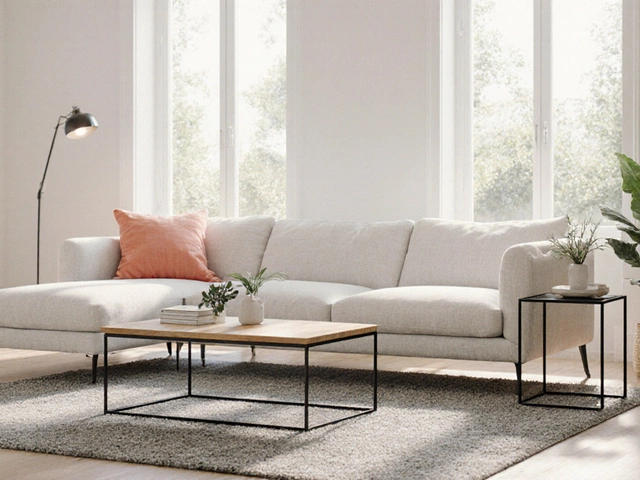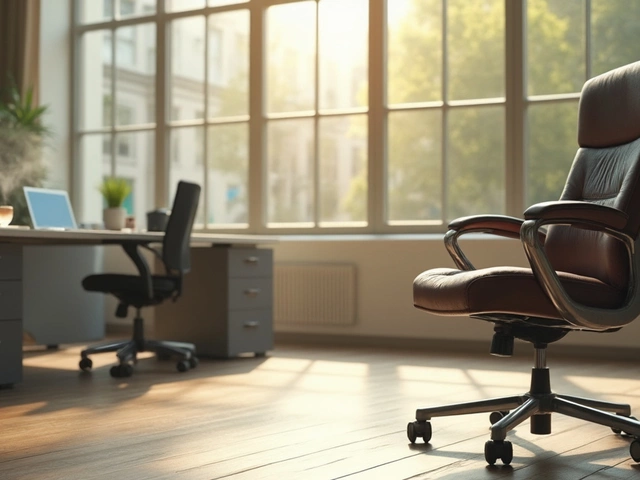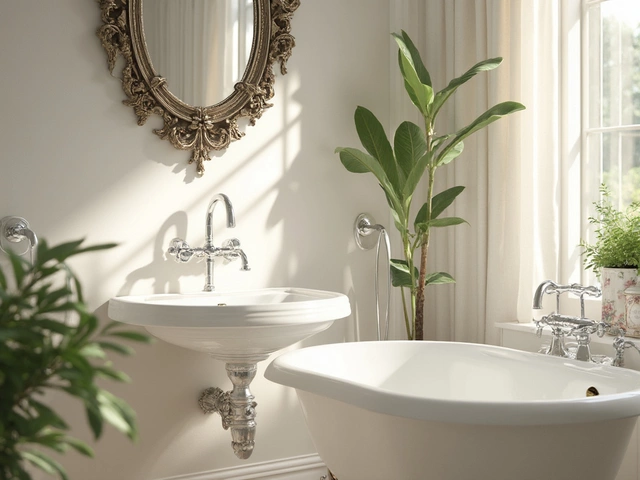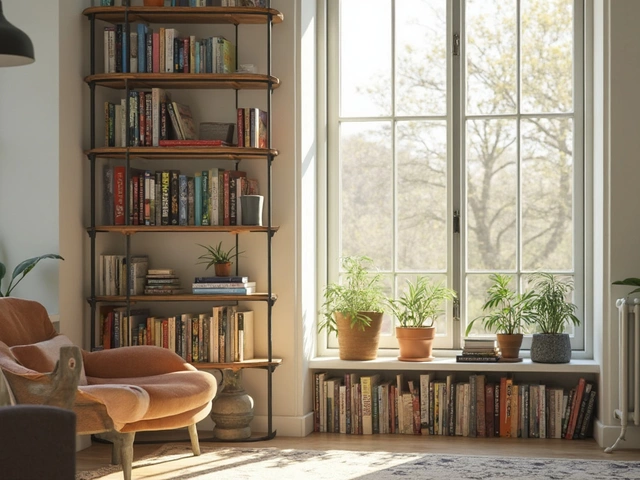Ever thought about putting a bookshelf right in front of a window? You're not alone. Maybe your room's awkward or you just have way too many books. Sometimes there’s that weird wall, too many windows, and nowhere else for your prized bookshelf. So the window becomes the next best spot.
But hold up—there’s more to it than just shoving it in place. You’re messing with the way sunlight hits your room. You could lose that bright, airy feeling and end up sitting in a space that looks a bit gloomy. On top of that, your favorite books might take a beating from the sun, especially if it shines directly through the window and onto those covers. Faded spines—nobody wants that.
- Why People Put Bookshelves in Front of Windows
- How Blocking Light Changes a Room
- Risks for Books and Furniture
- Creative Ways to Make It Work
- Alternative Solutions When Space Is Tight
Why People Put Bookshelves in Front of Windows
Let’s face it, not every room is a perfect square with tons of empty wall space. In small apartments or older homes, you often end up with more windows than you really need, and not enough solid walls. So, people start looking at those windows as possible spots for a bookshelf. It’s about using every inch you’ve got.
Another reason? Some folks just have way more books and stuff than shelves, and the window area is sometimes the only space left. When you’re a book collector or have a hobby that needs lots of storage, priorities change—function wins over the “rules” of interior design.
Some people also use bookshelves to block an ugly view. If your window faces a brick wall or a busy street, covering it up with books feels better than staring out at the back of a dumpster. In colder climates, a bookshelf adds a bit of insulation to drafty old windows, cutting down chilly air in winter. On top of that, windows can create awkward layouts, and putting a bookshelf there actually helps organize the chaos.
It’s worth saying that for renters, you can’t always drill into walls or put up mounted shelving. A freestanding bookshelf against a window is often the best compromise—no landlord complaints, but your storage problem gets sorted. Plus, for some, it’s just an easy way to rearrange and change up the room without spending any money or time on big renovations.
How Blocking Light Changes a Room
Blocking a window with a bookshelf isn’t just about covering glass—it totally shifts how your room looks and feels. Natural light is a game changer. Studies show that rooms with lots of daylight actually make people feel happier and more alert. Hiding your window behind a bookshelf can turn a bright, open area into something that feels boxed in and smaller.
Lighting affects more than just your mood. When you block natural light, you’ll probably end up switching the lights on more often, which bumps up energy bills. In fact, according to the U.S. Department of Energy, using artificial lighting during the day can increase household electricity use by up to 15%.
Here’s a quick comparison to help you see what changes when you put a bookshelf in front of a window:
| Before Bookshelf | After Bookshelf |
|---|---|
| Room feels larger and more open | Room can feel smaller, even cramped |
| Natural light saves energy | Lights are on more—higher bills |
| Easy to grow houseplants | Plants struggle; some may die |
| Cheerier, more energetic vibe | May feel dull or less inviting |
If your window is the main source of sunlight for the room, blocking it makes an even bigger difference. Some folks try to solve this with see-through or open-back bookcases. But even with gaps, you’re not going to get the full benefits of direct sunlight. The most important thing here is to know that blocking natural light changes almost everything about a room—how you use it, how you feel, and even how much you’ll pay on your next power bill.
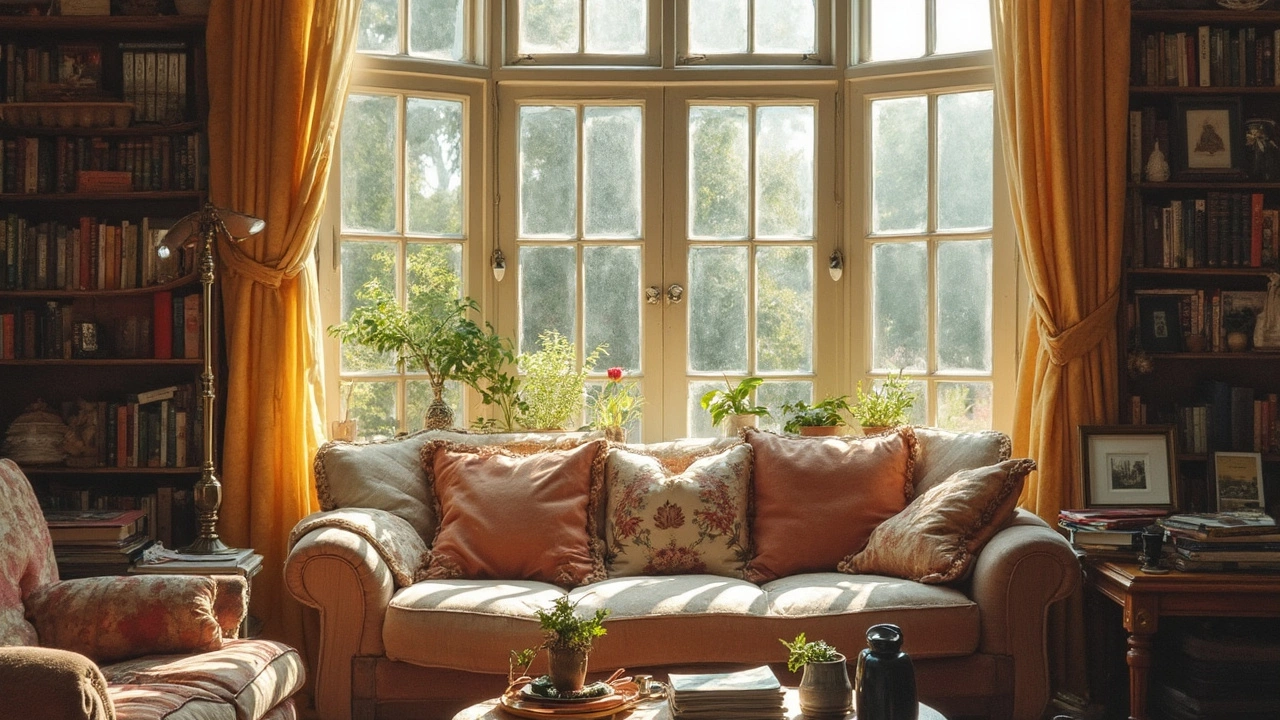
Risks for Books and Furniture
Putting a bookshelf in front of a window can seriously mess with your stuff. First off, sunlight is a big deal. Direct sunlight can fade book covers and pages fast—sometimes you’ll see ugly bleached-out spines in only a couple of months. Leather-bound and older books are extra sensitive, and the damage can’t be undone.
Heat is another problem. Windows can crank up the temp around your bookshelf, sometimes by 10–15°F compared to the rest of the room. High heat can make books warp or glue bindings turn brittle, and it’s even worse if you live in a hot climate. Your bookcase isn’t safe either—furniture sitting in front of glass can get warped, faded, or even start peeling, especially if it’s made of wood or laminate.
Dampness sneaks in too. Windows can get condensation, and humidity is bad news for both books and furniture. That musty smell or even mold can show up faster if your shelf is always in the splash zone from a drafty window.
- Faded spines and covers make books look old and tired fast.
- Glare on glass doors (if your bookshelf has any) can make it tough to actually see what’s inside.
- Pests love window areas—bugs and even rodents are drawn to small gaps and the warmth.
| Contributor | Book Impact | Furniture Impact |
|---|---|---|
| Direct sunlight | Fading, brittle pages | Faded paint/finish, warped wood |
| Temperature swings | Warped covers, loosened bindings | Cracks, structural weakness |
| Condensation/Humidity | Mold, musty smell | Swelling, peeling finish |
If you’re going to risk it, at least keep your most fragile or valuable books somewhere else. Think about using UV-blocking film on the window, or sliding in a simple curtain behind the shelf. It won’t solve every problem, but it can help cut back on fading and heat.
Creative Ways to Make It Work
If you’re stuck and the only spot left for your bookshelf is in front of the window, you still have options. People have made it work without turning their window into a black hole or ruining their bookshelf. You just have to tweak a few things to fit your space and needs.
One way is going with an open-back bookshelf. This keeps most of the light flowing through instead of blocking everything. You still get shelves for your stuff, but natural light finds its way into the room. Lots of brands, from IKEA to Target, actually sell these specifically because so many folks have bizarre layouts. If you already have a regular shelf, you can take off the back panel—just be careful so you don’t wreck the frame.
Or try a low-profile bookshelf. Basically, you want something that sits below the window ledge. This lets sunlight fly over the top, keeps your view, and gives you a cozy book nook. Look for those that are under 30 inches tall. Stat time: In a 2022 interior design survey, 35% of small-apartment owners said they used short shelving under windows to save space and keep things bright.
Worried about your books fading? You can always stick UV film on the window or use sheer curtains. These block the harsh sunlight but still let light come in. Or, get creative and store stuff that won’t care about sun, like decorative bins, baskets, or plants on the sunny side.
- Go see-through with glass shelves to boost that airy vibe.
- Push the shelf slightly away from the glass to let heat move behind and stop mildew.
- Mix in plants—they love the light, and it breaks up the look.
- Use the shelf as a makeshift window seat if it’s super low and strong enough.
Let’s see how these ideas stack up by purpose:
| Method | Light Retention | Book Protection | Aesthetics |
|---|---|---|---|
| Open-back Shelf | High | Low | Modern, airy |
| Low Shelf | Medium-High | Medium | Cozy, practical |
| UV Window Film | High | High | Subtle |
| Decorative Storage | Depends on Items | High | Flexible |
With a little planning, you don’t have to sacrifice sunlight or style just because you’re short on space. Take these tips, mix and match, and wrangle your tricky room into something that actually works for you and your books.
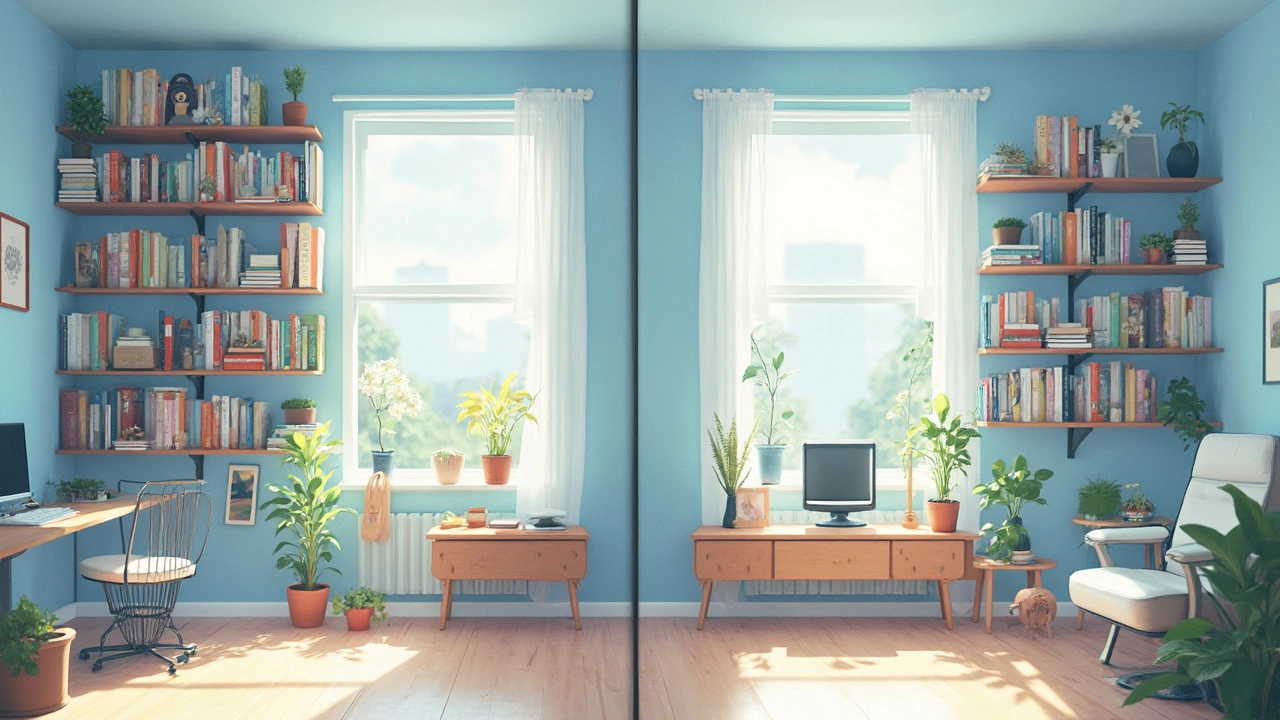
Alternative Solutions When Space Is Tight
You’re squeezed for space—so what now, if you don’t want your bookshelf stealing the only natural light in your room? There’s no one-size-fits-all fix, but there are clever ways to stash your books without killing the vibe or making your place feel boxed in.
- Floating shelves: Pop a few floating shelves above windows or doorways. Dead space up high is often overlooked, but perfect for showing off favorites you don’t grab every day.
- Corner bookshelves: Corners are awkward, but there are corner-specific units that fit right in and leave the windows open. They can usually hold more books than you’d expect.
- Under-bed storage: Books under the bed? Sounds weird, but storage bins or rolling drawers under low beds are a stealth move, especially if you’re in a small apartment or dorm.
- Multi-use furniture: Benches and ottomans with hidden shelves or storage work double-duty for seating and book storage. There are even coffee tables with shelves underneath for your current reads.
- Back-of-door racks: Over-the-door organizers aren’t just for shoes. Smaller paperbacks and e-readers can fit into those fabric or wire pockets, which is a huge bonus in tight rooms.
Not sure how big a shelf you need or how much weight your idea can handle? Here’s a quick snapshot comparing common solutions:
| Solution | Book Capacity (avg.) | Estimated Max Weight |
|---|---|---|
| Floating shelf | 10-20 books | 20-40 lbs |
| Corner bookshelf | 25-50 books | 50-100 lbs |
| Under-bed bin | 20-40 books | 50 lbs |
| Storage ottoman | 10-15 books | 20-30 lbs |
| Back-of-door rack | 6-12 books | 10-15 lbs |
The point is, blocking your window with a bookshelf isn’t your only move. With just a bit of creative thinking, you can dodge that mistake and make your place work for all your stuff—even those overflowing stacks of books.
